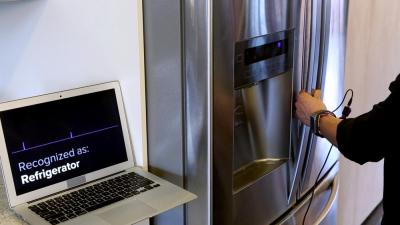Making Smartwatches Smarter

New improvements to smartwatches address significant shortcomings in the initial product. But these advancements — such as built-in networking and efficient phone pairing — only scratch the surface in smartwatch application potential.
Two main issues that smartwatch users currently face are the difficulty of navigating a tiny screen and the lack of a killer app: an app that sets the product apart from those similar to it.
HCII Assistant Professor Chris Harrison was recently featured in an InformationWeek article, where he shared ideas to make smartwatches more useful. For these watches to provide the best possible experience for users, they will have to exploit their unique advantages. He believes smartwatches could potentially have access to the user's bioinformatics and sense activity based on the user's arm motion.
Harrison, along with fellow researchers Gierad Laput, Chouchang Yang, Robert Xiao and Alanson Sample, has demonstrated that smartwatches can identify electronic objects touched by the wearer. Through the EM-Sense project, researchers from both Carnegie Mellon and Disney Research Pittsburgh used smartwatches to read electronic signatures of electromechanical items, enabling the watch to identify the item the wearer was using.
Other forms of input, like voice, also provide alternatives to physical interactions with a tiny smartwatch screen. The prospective uses for a killer app in a smartwatch are endless.
"All these things are crystalizing right now," Harrison said. "We're getting to the point where smartwatches will have that payoff."
Read more about Harrison and his team's research on smartwatch applications in InformationWeek.
Story by Aisha Rashid (DC 2019)

